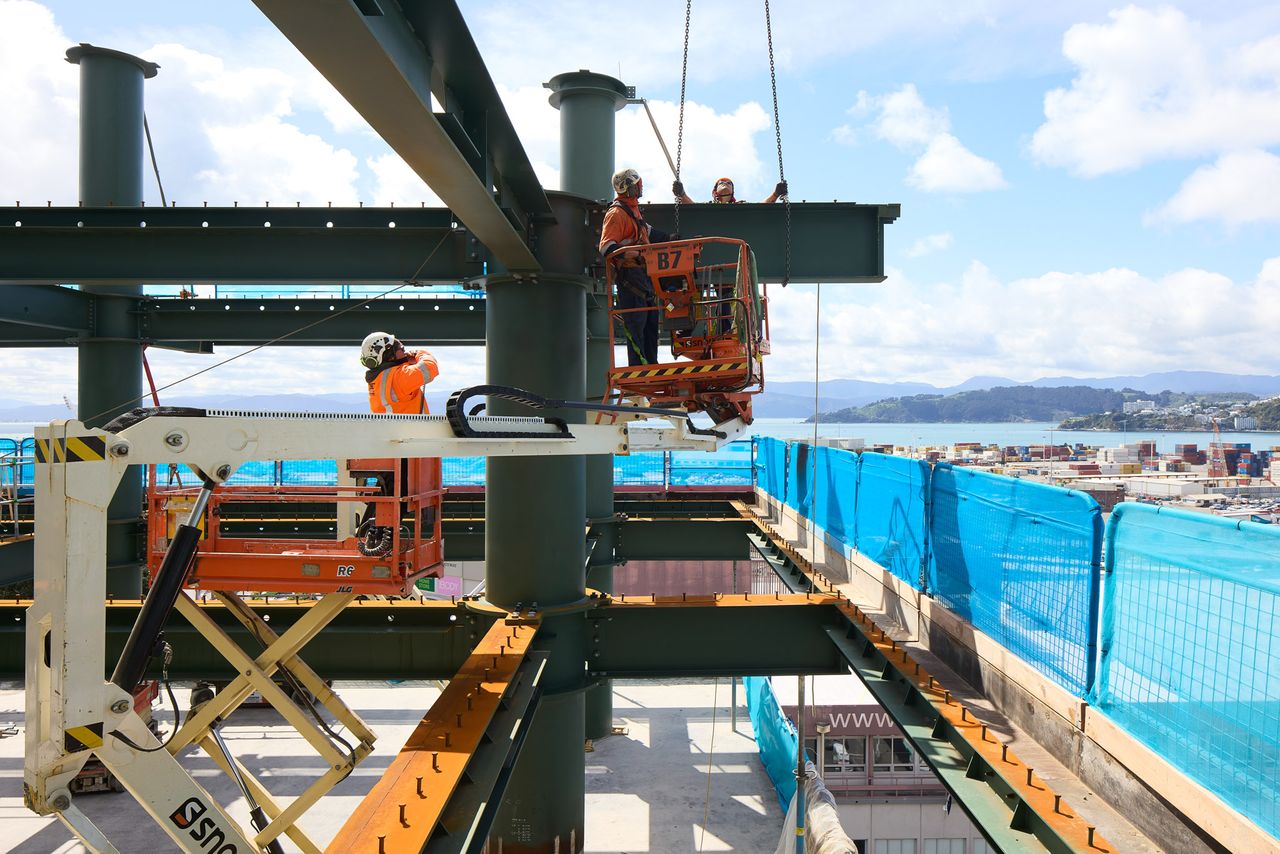News & Insights
Creating Value in Construction
Date
- 2024 June

Jason Ward, Senior Design Manager at RCP, is a seasoned industry professional with local and international experience across design, construction, project management and quality assurance. He's passionate about the industry and the people who work in it but recognises there are still persistent issues to fix within the design process and how it serves construction delivery.
Jason is in the perfect position to bring actionable ideas to the table. His experience spans international and New Zealand projects, and the quality of his work is recognised in numerous high-profile awards. His previous roles include Deputy Project Director for a $1.5B 5-Star Pharmaceutical R&D facility in Shanghai, Project Architect for a nuclear magnetic resonance (MRI) lab in the UK, Senior Architect for 100+ VIP Villas at Sanctuary Falls, Dubai, and Principal Architect for Kuala Lumpur's award-winning Reickermann Commercial Office fit-out.
Locally, Jason has held various roles, including 'Design Technical Advisor' for various Ministry of Education new-build schools and has completed hundreds of residential projects. Since joining RCP last year, he has provided design assessment reviews for the New Dunedin Hospital and Wellington Sludge Minimisation Facility projects.
Jason discusses his current role at RCP and how this offers an opportunity to improve efficiency and productivity through performing the Design Assessor role on key projects.
Q - Design Assessor might not be a term people are familiar with; how would you describe it?
The Design Assessor is a project role relatively new to the local industry but is used widely overseas. At RCP, we’ve developed an offering relevant to New Zealand and responding to local demand for increased design moderation.
Our clients want greater assurance that the significant investment they’re making into large consultant teams actually pays off. They're rightly expecting design documentation that is fully coordinated and build ready. They understand it's in their interests for their builders to be set up to succeed.
Traditionally, the project 'Design Manager' was an all-round professional who oversaw this process and coordinated design inputs. While they still have an important role in this process, the reality is that the level of detail and technicality that comes with big, complex projects means they need help reviewing details and technical documents. Design management that works for smaller projects simply doesn’t scale up on those projects.
Drawing on my background, including many years on construction sites, I act as a second set of eyes across all designs to review individual consultant’s documents and ensure they are accurate and coordinated. For every error or issue I identify in the design, the cost savings to the client can be quite significant.
Market feedback indicates that the multiplier cost effect of fixing issues later onsite, rather than addressing them in the design phase, is very significant and pales in comparison to the cost of the design assessment function.
Q - How does a Design Assessor help overcome some of the major challenges in the industry today?
Construction complexity has increased exponentially over the past decade and shows no sign of slowing.
A typical large construction design package can include hundreds to thousands of drawings, covering architectural, structural, MEP, civil, landscaping, and fire protection drawings - which generally includes BIM modelling as well. Each drawing must function independently and in coordination with the others whilst also being accessible and easy for the contractors to understand.
A Design Assessor brings the necessary expertise to understand all the design elements and their practical onsite implementation. By spotting issues during the planning stage, we can significantly reduce the number of future Requests for Information (RFIs), saving time and money. I can identify hundreds of potential RFI items on a large project before completing the final design documents, leading to substantial project savings.
Not only do design improvements save time and money, but they also improve the relationship between consultants and contractors. Buildable designs reduce risk on both sides, which allows for more open conversation and greater collaboration - a benefit that extends to the entire project team.
Q - What are some real-life examples of how this role provides value.
I've been doing the Design Assessor role here and overseas for some time, and the value that it adds is generally easy to quantify. For instance, in a recent local high-rise project, I identified numerous issues that would have cost over $500,000 to fix during construction. To suggest the client was pleased to avoid these unnecessary costs would be a bit of an understatement!
However, sometimes, the right outcome isn't what you expect, and the cost savings can be viewed differently. For example, I recently reviewed a regional tourism project involving thousands of plans and identified literally hundreds of issues. This raised serious concerns, as the project was already well over budget. As a result of the design review, the project was stopped. This was probably the right call as continuing could have harmed individuals and organisations, potentially leading to bankruptcies and wider repercussions.
In another case, the architect was ready to submit detailed design documents to the Council and begin construction. But we advised to slow the project and create an improved set of Issued for Construction (IFC) documents first. These IFC plans provided the precise and comprehensive information needed for construction, resulting in fewer RFIs, better working conditions for contractors, and significant cost savings for the client.
Q - Tell us about your research, what you're learning about the building environment and how this influences your thinking.
This is a topic I'm increasingly passionate about! When I first began my role at RCP, Directors Andre Koolen and Marcus Read suggested consulting key people in the industry to ensure we were addressing real needs. I started by interviewing construction managers and key sub-contractors to identify and understand their pain points and construction inefficiencies. I then moved up to understand designers' challenges.
Since August last year, I've interviewed 130 individuals from over 70 companies. The insights have been invaluable. It quickly became apparent that people were keen to share their issues because they wanted to see change. But the industry works in silos, and sharing information and making change is difficult. I see these interviews playing an important role in bringing a range of conversations to one platform.
This research is crucial, especially in tough times. In March, Centrix reported the highest number of liquidations in nine years, with the construction sector hit hardest. Such an environment makes work stressful, affecting families and tragically contributing to high suicide rates. If we can find better ways of working and pass these wins down the line, everyone will be better off.
I'm grateful to be part of RCP, a company with the size and motivation to conduct this research. With our nationwide reach and resources, we hope to propose solutions that benefit everyone.


